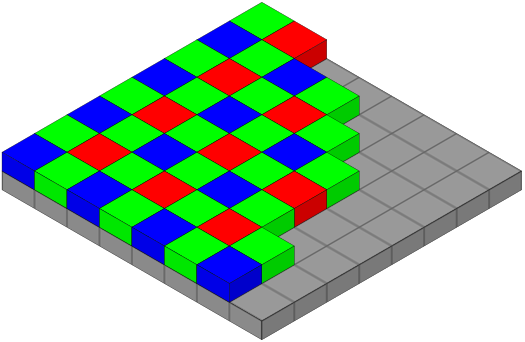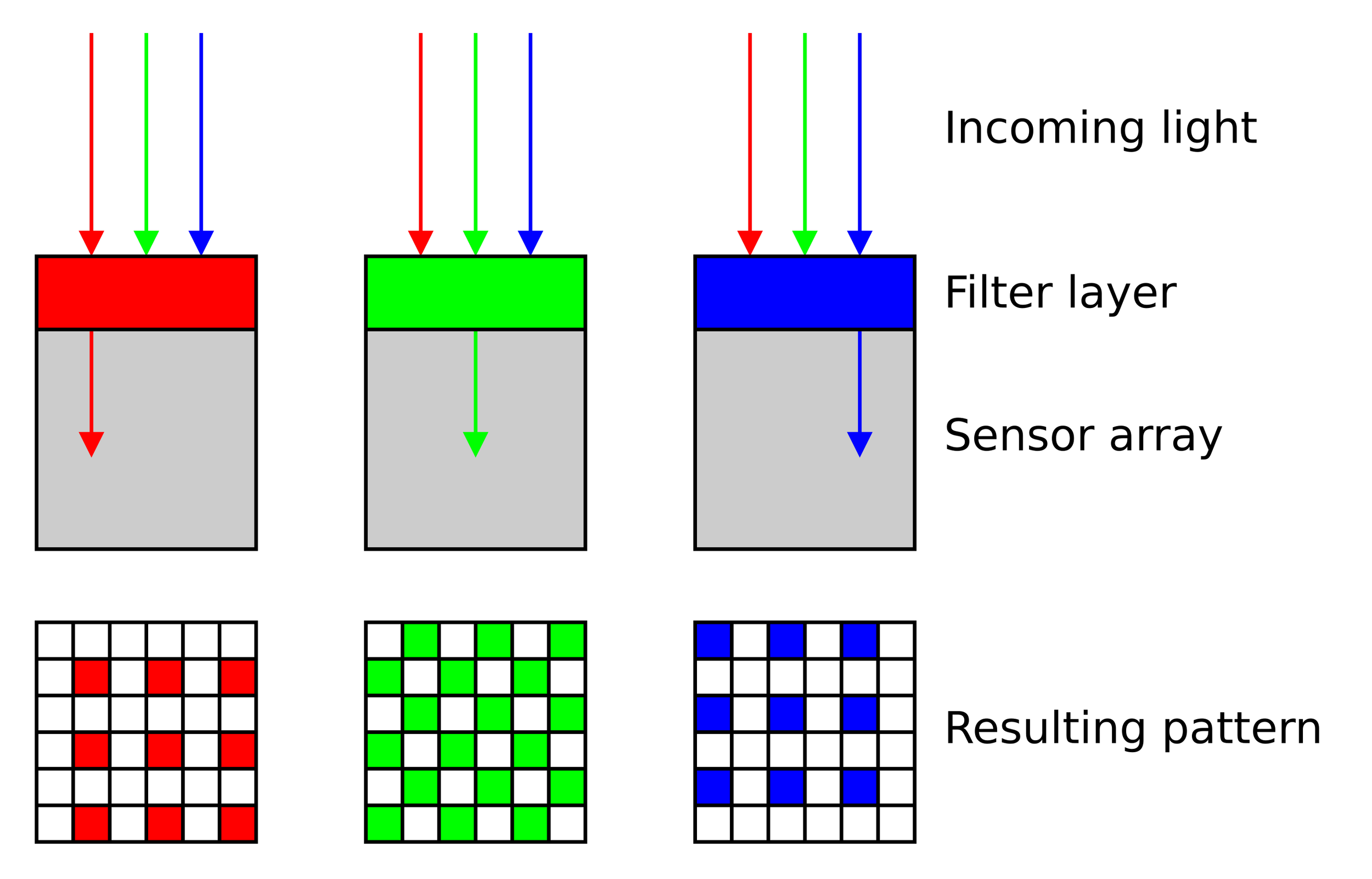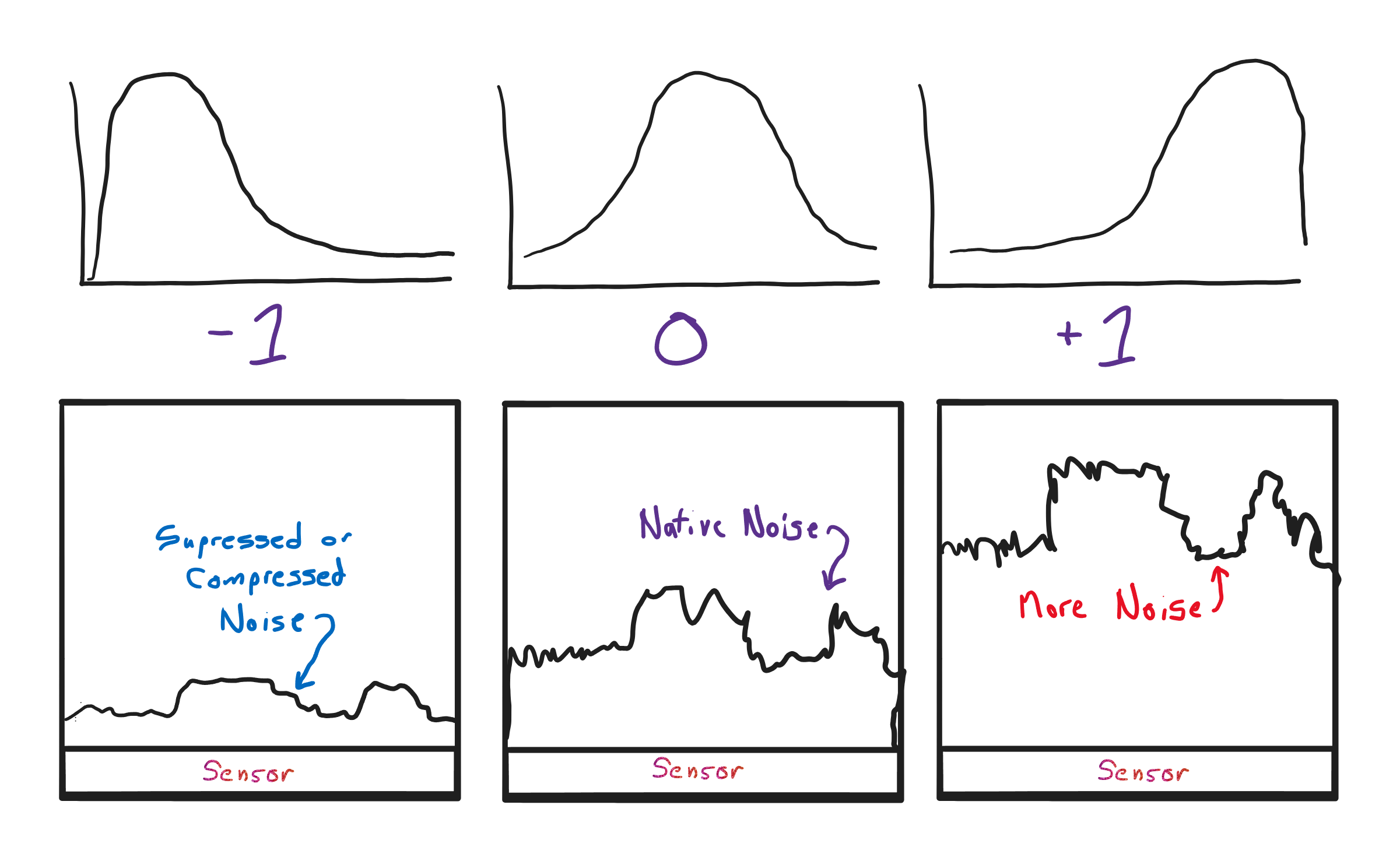The only correct setting to bracket for HDR
A friend who is learning to shoot HDR images mentioned he’s using ISO to change the exposure of his images when bracketing. After a brief moment of thinking, and inquiring if he was shooting RAW, I tried to explain why ISO shouldn’t be used to change exposure.
I was correct, but not 100% accurate as to why. So here’s a slightly longer winded version, a better explanation, with a more technical shallow dive.
Now what does an imaging sensor do? Simplified - it “counts” photons striking sensor sites (or sensels) - producing a signal that passes through an Analog to Digital converter, which is then recorded as RAW image data by the camera onto storage of some kind.
It’s important to note that a sensel does not correspond with a pixel of an image, but a unit of light collection within a layout similar to that illustrated below - a Bayer Patterned sensor - filtered by colour:
An algorithm must be applied to the collected values of groups of sensel data in order to calculate the colour of an individual pixel that goes into a final images - a process called “Demosaicing”.
Why is this important? It’s not really, just interesting - but the important part of this is the sensel itself, and the process of converting a collected analog signal into digital data using and Analog to Digital Converter (ADC). Which is partly where ISO comes in.
So what is ISO? Basically a numeric expression of the sensitivity to light that your particular digital sensor has. A sensor has the concept of a native ISO - that is the base sensitivity of the physical sensor with no modification of the signal using the ADC - and it would be different depending on camera brand and possibly camera model.
For Canon, the base ISO is 100, others brands and camera models may be ISO 64, 160, etc. For the purposes of this article, I’ll use 100 as it makes the math easy.
Now, in the exposure triangle we have 3 control knobs that can change your exposure, but only 2 that will change the number of photons that strike the sensels found on a sensor, that is Aperture (F-Stop), and Time (Shutter Speed). Not ISO. ISO has 0 effect on the amount of photons that strike the sensor, therefore the base signal remains the same no matter what ISO is set to when the other 2 knobs remain unchanged.
What does change is the “gain” - or boost of the signal that comes from the sensor before it’s converted into digital information for recording using the ADC. The quality of the gain of course depends on the implementation of the actual ADC hardware, but just like when you add gain to a microphone, you also increase ambient noise that must later be cleaned up or cancelled. Compressing the signal would have the opposite effect, that is reducing the amount of ambient noise.
But gain will not increase the number of photons captured by the sensor. It will not give you extra information where it does not exist. It will boost the signal that is already there, but not give you new data (like in the shadows) that you don’t already have.
Now I previously (and mistakenly) believed this gain was applied digitally in post-processing, but on further research found that the gain is applied in the analog to digital conversion process as it produces the cleanest signal near the source, however the conceptual effect is the same. No additional dynamic range in your image comes from modifying the ISO, only more or less noise.
Example
So let’s say I want to bracket 3 images for an HDR photo, exposed as -1, 0, +1. I’ve used ISO to perform the exposure modification. Aperture and shutter speed remain identical for all 3 images. Then I’ve just created 3 images with the same dynamic range.
The same quantity of photons have been collected for each of those exposures, only the signal has been boosted, no additional information was captured in the shadows. Shadow clipping, or even highlight clipping would be mostly the same. So even though the images may look different at first glance, you gain nothing in dynamic range when combining them into an HDR photo, other than possibly a cleaner image by averaging out the noise during HDR processing.
Bracketed Exposures
A set of 3 bracketed images, histogram on top, a cross section of sensor signal with noise exaggerated.
Please forgive my drawings.
Native Noise represents your 0 image, as in the ISO that gives the correct exposure, and maybe not your sensor native ISO. For example, ISO 800 may be 0 for your exposure settings, making ISO 400 your -1, and ISO 1600 your +1.
It’s best to think of ISO in terms of audio, using ISO to increase sensitivity is equivalent to applying gain to a microphone pre-amp, vs using the master volume to increase mic volume. You get a higher source signal, but an increase in noise nonetheless with no additional information.
You could come to the conclusion that, unless you’re shooting one of the automatic settings, Shutter, or Aperture Priority, and using ISO to increase or decrease values elsewhere on the exposure triangle, ISO does not affect your real exposure. Changing ISO does not give you anything more than a boosted signal and the same exposure.
So now that we know ISO is not the correct way to increase dynamic range, what is left?
Aperture (F-Stop)
and Time (Shutter Speed)
Since Aperture will change the depth of field, and therefore the image content itself, it’s not a valid option.
So we have Shutter Speed. It’s the only logical option as it increases the signal by allowing more or less photons to strike the sensels by using more or less time.
Happy shooting!
Afterword
Some cameras have the concept of Expanded ISOs. It’s important to note that conceptually this is the same as regular ISO, but the gain is applied digitally and not through the Analog to Digital Converter (ADC). This may mean that your image is even noisier on the high range. However something special happens on the low range, the signal is compressed, so in theory you may have half the noticeable noise if your exposure is adjusted accordingly. You also gain an extra stop of dynamic range in the shadows - and I think you should use it anytime your scene exposure is at least a stop away from clipping the highlights, all other things considered. On Canon - L is recorded as ISO 50.



